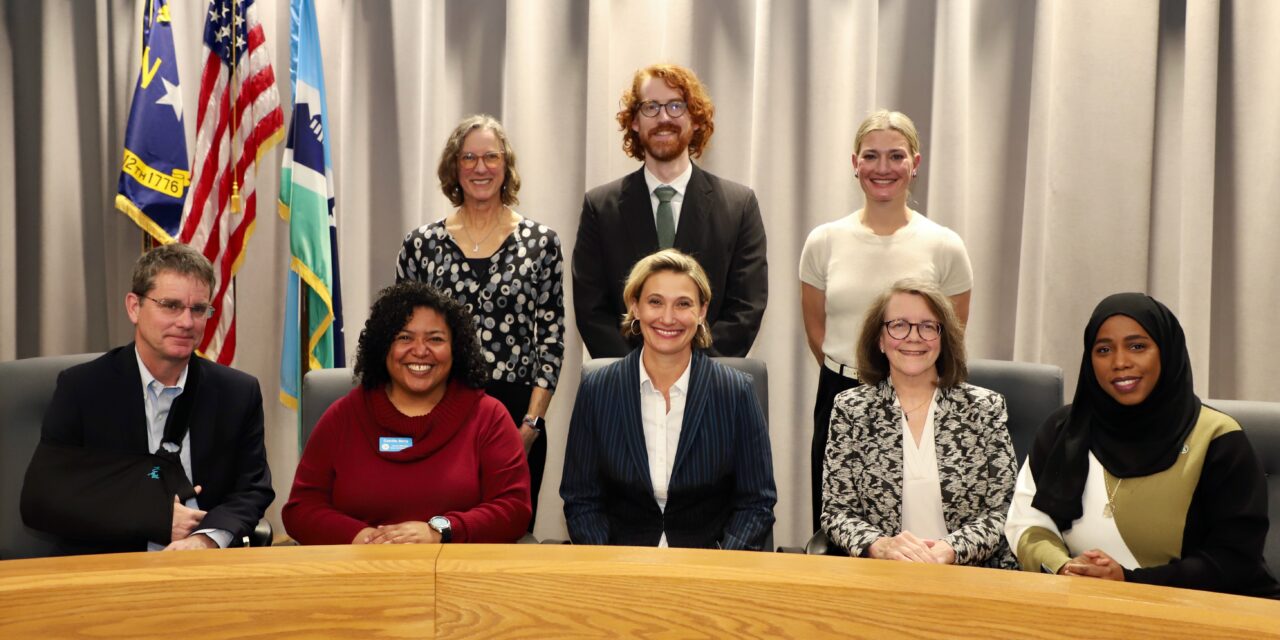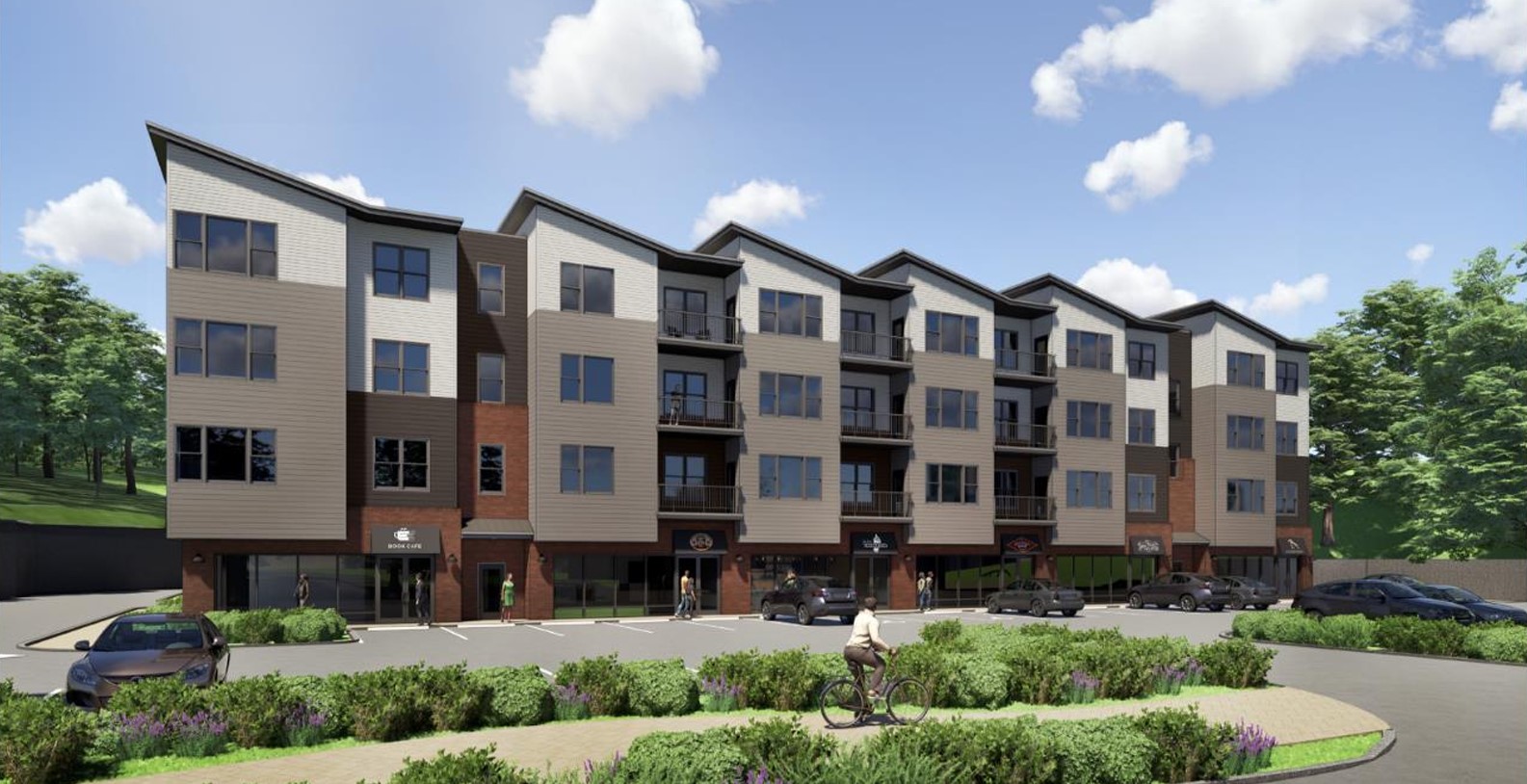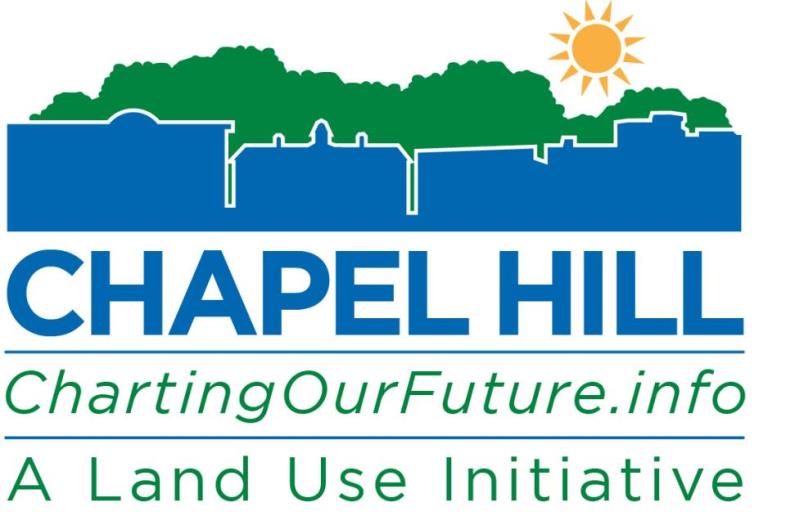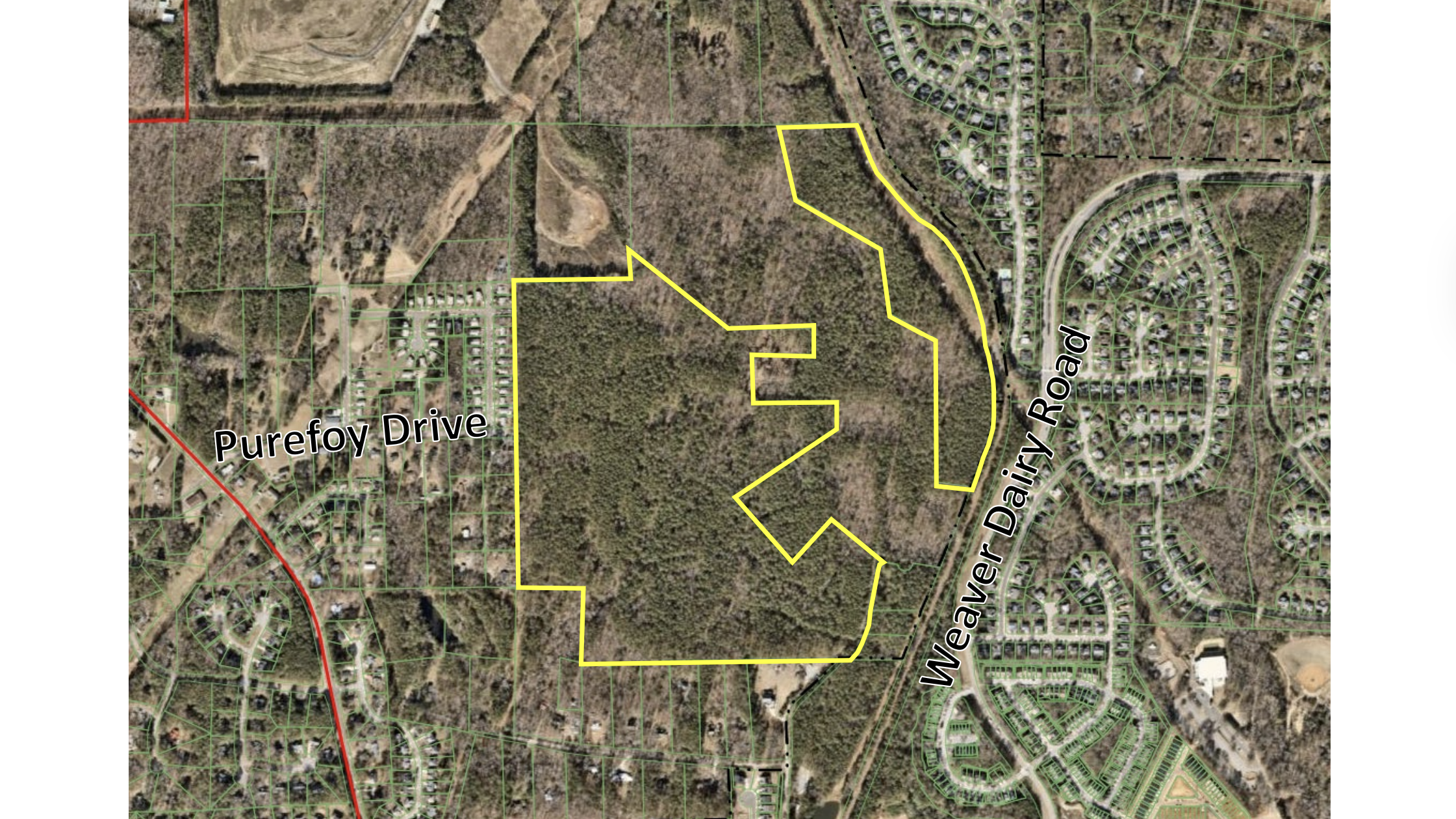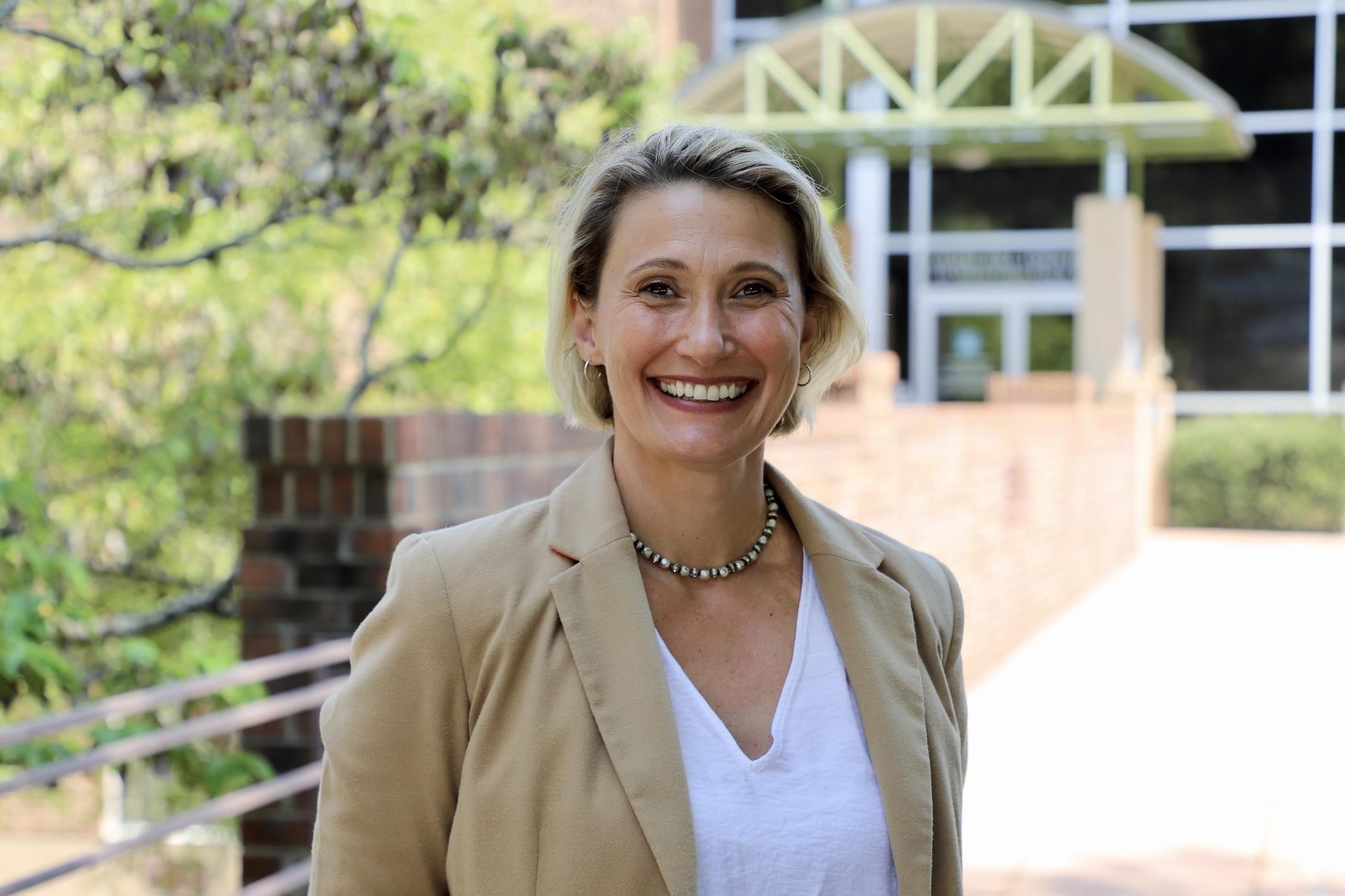The Chapel Hill Town Council held a work session at the Chapel Hill Public Library on Wednesday, February 21. The council continued their discussion from January on the plan to rewrite the Land Use Management Ordinance (LUMO). Since the council discussed the project’s timeline and overall objectives during the January meeting, they covered several detailed topics at the February meeting.
Staff heard the council members’ opinions on the regulation of specific land uses, including drive-thrus, shelters for people experiencing homelessness, and the conversion of certain types of land for other uses, including the conversion of commercial to residential land and developing housing at places of worship. They also discussed environmental protections for resource conservation districts (RCDs), tree protection, and landscaping regulations.
Here are comments each council member gave during the meeting. To watch a full video of the meeting, click here.
Mayor Jessica Anderson
On shelters for people experiencing homelessness
“What are the criteria for where it’s best in terms of making sure folks have access to services? Maybe it’s just that no one would build a shelter in a place that doesn’t make sense, so maybe that’s fine. Or, are there places on the outskirts of town that don’t have great transit service, that aren’t walkable?”
“Right now, are there places where it’d be like: this just isn’t a good place for a shelter, not because we don’t think that they’re appropriate for that neighborhood because of the residents, but because we really want people to have access to the services they need while they are in shelter and transitioning.”
On the conversion of commercial to residential land and developing housing at places of worship
“I feel like my interest would be figuring out a way to, if possible, have the mixed-use model, as opposed to going all residential. But then again, to me, it’s a little bit site-specific. But I do know that we kind of have nodes or we have places where we know that we want to encourage and have commercial. So, just because in 2024 it doesn’t pencil out, doesn’t mean that in the future there might not be an opportunity, or that one of our other programs like an economic development incentive program couldn’t help us get commercial there. So, I just want to leave the door open for keeping some commercial so that we are having things be walkable for people, but obviously if it can switch to residential, and there’s a need for that, that seems reasonable to me.”
Mayor Pro Tempore Amy Ryan
On environmental protections for RCDs
I think that we have an opportunity here not just for trade-offs; I think we can actually make things better. As part of our Complete Community promise, we are trying to plan for 2050 where there is going to be significant climate change and disruption. I think, as Melissa said, some of these assets, once we’ve used them they are gone. There is a Green Growth toolbox that’s from the state that’s designed to help communities like ours implement good ecological practices while they allow for growth and development in their area. I think that would be really valuable for us to see.”
“The environment here is much more than trees and RCD, there’s a lot of other pieces to it as well, so I’d like to see us try to maybe dig a little deeper on this topic in general. I’m aware that we’ve given away a lot of RCD incursion, and that always was a problem to me. I would be much happier if we had a set of standards that just said look, these are the standards, this is what you need to do. I’ve seen 70% of an RCD gone with a development approval, and in general, those approvals have come to us with staff recommendations that doing so will meet town objectives. It meets one town objective, but I think we need to recognize the importance of those environmental objectives as well. I know that because of the capacity analysis we do, that we have the land to be developing to meet our housing needs for decades in the future. This isn’t a choice between not building and environmental protection. We really have the opportunity to do both.”
Council Member Camille Berry
On drive-thrus
“We can talk about emissions, and we can talk about where we want to be, but let’s not forget about the realities about what some families don’t have a choice over. They do not have that choice. Drive-thru was my lifeline for many, many days and evenings. So, I want to make sure that we don’t forget that.”
On environmental protections for RCDs
“If the [zoning] map reveals, after the study is done by multiple departments, that those assets are not present, why would we not adjust the RCD rules in that area? Going back to what Elizabeth proposed tonight, why would we hold someone accountable for something that doesn’t apply to them? So, I’m not saying we change it right now, but I’d like for us to be open to not holding someone hostage to the assets their neighbors have, and they don’t.”
Council Member Melissa McCullough
On drive-thrus
“I prefer us keeping the fact that you need a special-use permit to do it, except for some uses and appropriate places. I think that drug stores are the perfect example, but I think that one of the things that we learned during the pandemic was that in the need of a situation like the pandemic, there’s a lot of innovation that takes place. There’s still curbside pick-up places at Panera. There are curb delivery places in restaurants. I don’t think that planning for a pandemic that might never happen again is a good way for us to do it. I think that we ought to do whatever we can to minimize it and figure out how to do it without drive-thrus.”
On environmental protections for RCDs
“When I have a discussion about what kind of incursions I would allow to happen in an RCD, I want to see what the assets are, and I want to see how they talk about how those assets would translate into impacts. That is, what kinds of things that might be built in an RCD and how that would impact that asset. About the small parcels, I think that very often, I saw this at Coastal Management, you have a smaller parcel, and you allow people to do something because this is their tiny parcel, and this is all that they have to build on. And what we have to remember is that by allowing them to do something that is stupid – building in a floodplain, building in a place that it’s going to undermine the stream – we’re not doing them any favors. So, we need to consider that in giving them the opportunity to do something that’s unwise, as well as doing something that may impact, significantly, the resource.”
Council Member Paris Miller-Foushee
On shelters for people experiencing homelessness
“We know today that the best practices are non-congregate sheltering. They create more dignity based safer options as they provide a bridge to more long-term housing. So, thinking about policy around this land use, I think shelters could be anywhere to allow for creative uses for more non-congregate sheltering options, allowing for even possible conversions of hotels, buildings, or other facilities when thinking about allowing for shelters. I also think it’s important to think about where – proximity to transit, access to jobs, opportunities, and other amenities that meet people’s needs. So, my interest would be a land-use policy for shelters that forge creativity as opportunities arise, like the conversion of a single-family home to house women who are escaping domestic abuse, or even the conversion of a school or something like that. Keeping in mind that non-congregate shelters provide alternatives to more conventional congregate shelters.”
Council Member Theodore Nollert
On environmental protections for RCDs
“Melissa’s point about this being an ecosystem is exactly right, and I think that what the county will do with their land is an extremely important part of this equation. If the county thinks it’s inevitable that every square inch of Orange County is going to be McMansions one day, I think that changes our equation. If the county says you can help us to preserve land, streams, natural habitat, and things like that, then the issue is that we have to make some incursions in Chapel Hill to accomplish that, that’s a significant trade-off. I don’t think it’s one that we can make blindly, but I think it would be really helpful for us to get some information from them about what trade-offs they think we can make in Chapel Hill. We are a part of a symbiotic ecosystem here in this county and in this state, and the shrinking of farmland right now is an extreme concern to me in North Carolina, and I find that a relevant part of this equation.”
Council Member Adam Searing
On drive-thrus
“I’m pretty agnostic about drive-thrus. I think there are some places that are appropriate, some that are not. Please don’t ban the Cook-Out drive-thru. One of the things I found pretty interesting when we approved the Dunkin Donuts drive-thru. I thought it was interesting that the developer who was obviously a fan of the drive-thru, I did think this was a good point they made about the increasing use of electric cars and also the moderate use of gas-powered cars that have ignition shut-offs. So, I think we should keep in mind that as we move forward with allowing them in some places and not others.”
On environmental protections for RCDs
“When you’re talking about density in Chapel Hill and the county in a different category, of course, if we’re going to build a walkable community, we want people to walk to green space and walk to parks. If the parks and the green space aren’t in the county, then they’re going to have to drive there. So these are two goals that we want to try and do both. We want to have the density, but we also want to provide the green space, and if we get stuck in saying the county is going to provide the parks system we need, then we give up something in having everybody drive there.”
Council Member Elizabeth Sharp
On tree protection and landscaping regulations
“I think that it’s incredibly important on a lot of levels that we pay attention to landscaping and tree canopy and street trees. Design is something that we’re thinking about much further down the road, but to me they should be absolutely coupled. In fact, in some ways, I think that the landscaping and tree protection part of it might be more important than some of the design parts of it because you can mitigate a lot of bad design with some good plants. But, one of the other things that I would like to explore is not only, or not even whether our tree canopy regulations need to be more stringent, but how they can be more strategic and also how we can be more effective at enforcing them.”
Council Member Karen Stegman
On community engagement throughout the LUMO rewrite process
“I’m worried about your PTSD from the last couple rounds. I’m not saying it’s bad, but I feel like we talked about in the past, we had a lot of community engagement for the FLUM. We keep doing a lot of community engagement on kind of the same topics. So, what new information are we hoping to get, and how are we keeping staff from getting burned out?”
“I am worried about staff time. On top of that, we all have talked in this room before; staff were not treated very respectfully in a lot of those meetings, so how are we going to protect you from that? What are the guardrails in place? When that happens, it contributes to staff burnout, staff leaving. We don’t want that for you, so how do we have good engagement with guardrails?”
“One of the groups I think that will be valuable to hear from is the small-scale developers that want to work in Chapel Hill but can’t. I’ve talked to a couple. They have a lot of good thoughts about, ‘I’d love to do duplexes, but your [regulation] is just too cumbersome for me as a small local developer. They would be great to consult with and get input.”
Photo via the Town of Chapel Hill.
Chapelboro.com does not charge subscription fees, and you can directly support our efforts in local journalism here. Want more of what you see on Chapelboro? Let us bring free local news and community information to you by signing up for our newsletter.

